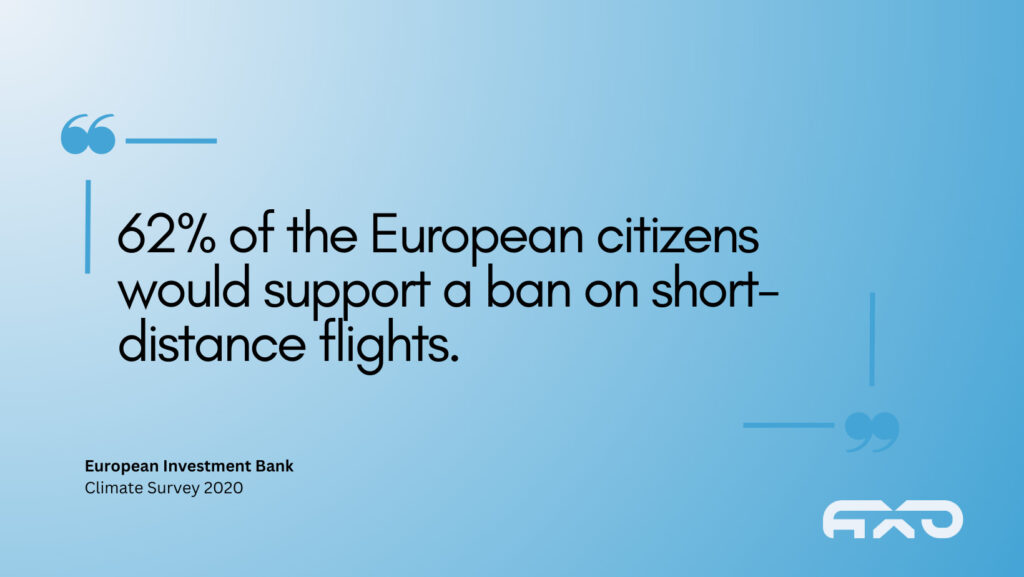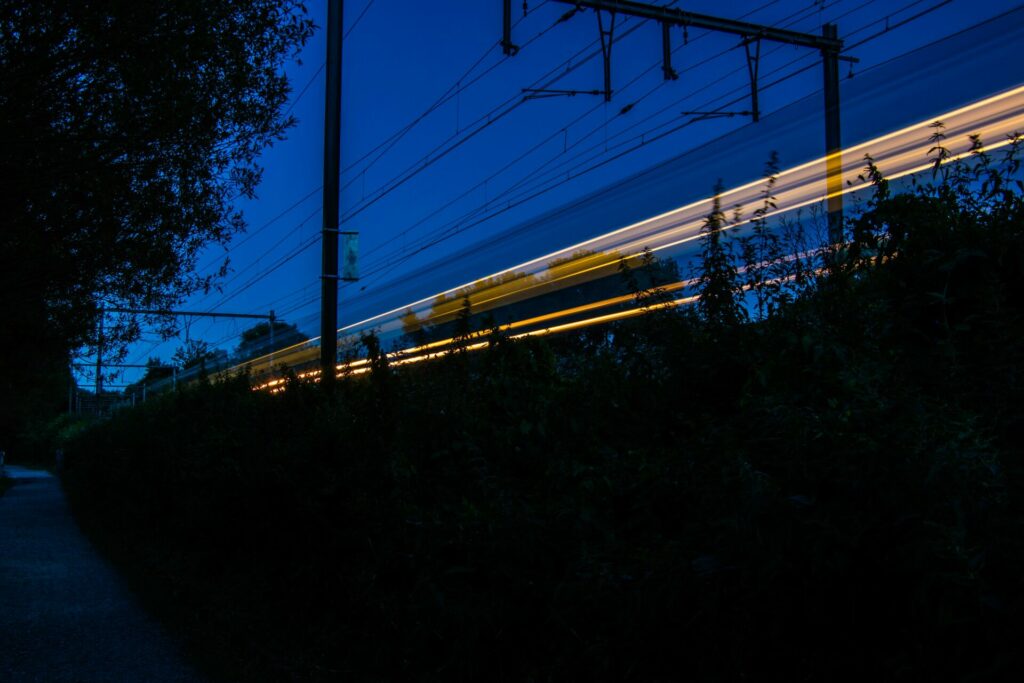A pleasant sway, the gentle rattle of the rails and the feeling of adventure in the air – traveling by overnight train is making a remarkable comeback. After years of oblivion, this almost nostalgic way of traveling is back on trend and enjoying growing popularity among travelers all over the world – and not just among people who want to travel sustainably. Where did this trend suddenly come from? And how can rail travelers take advantage of it? We take you on a journey through the history of night trains and shed light on the background to the renaissance.
Night trains have a long tradition in Europe. In 1872, the Compagnie Internationale des Wagon-Lits (CIWL) was awarded the first concession for the then novel combination of sleeping, dining and baggage cars and deployed the first night train just ten years later. The first trip was from Paris to Vienna. Already in the following year, the legendary Orient Express started its tours between Paris and Constantinople. In the following decades, a dense network of night train connections developed across Europe – albeit for a long time in the luxury segment. It was not until the 1950s that the night train became a means of mass transportation and satisfied people’s growing desire to travel.
But soon the overnight trains got competition. The airplane became more and more popular. At the same time, normal train traffic increased in speed. The increasing focus on speed and efficiency meant that many overnight train services lost their appeal and were simply no longer profitable. Deutsche Bahn, for example, discontinued its City Night Line in 2016. Since then, ICE and IC trains have been running at night, but they no longer have sleeping cars.
ÖBB is the largest operator of night trains in Europe
Instead, Austrian Federal Railways (ÖBB) operates an extensive network of sleeper cars with its Nightjet. ÖBB is thus the largest operator of night trains in Europe and not only offers a convenient connection to the capital of France, but also enables travel from Vienna to Bregenz, Zurich, Berlin, Brussels and Hamburg. In the south, destinations such as Venice, Rome, Milan and the Adriatic coast await. In cooperation with other European rail companies, EuroNight serves various cities in Poland, Hungary, Sweden and the Czech Republic. With the Swedish provider Snälltåget and the Dutch start-up European Sleeper, new players are also establishing themselves on the market.

© ÖBB/Harald Eisenberger
Back-on-track.eu estimates that night trains could replace many of the intra-European flights up to a distance of 3,000 km. The initiative’s night train map illustrates the variety of destinations.
Let’s take a look beyond Europe: night trains are also common on other continents. The most famous is certainly the Trans-Siberian Railway from Moscow to Beijing. Whether it’s India, Thailand, Vietnam or Sri Lanka, traveling in couchettes is very common here, and they offer themselves both because of the long distances and the spectacular views. From Japan, however, it is known that some night train connections have fallen victim to the high-speed train Shinkansen – so the phenomenon we see in Europe is also taking place here. In North America, Amtrak stands for long trips with sleeping cars.
Once around the world: Architect and cartographer Jug Cerovic has compiled worldwide trailing routes.
Escaping the Rush: Unwinding in Motion on the Night Train
In today’s hectic world, people long for deceleration and tranquility. Traveling by overnight train allows you to do just that. Instead of having to deal with crowded airports, long security checks and cramped seats, travelers can close their eyes at night and feel the rhythm of the rails. It’s a time to switch off, sit back and enjoy the slow journey.
There is also another factor: unlike airports, train stations are usually located in the middle of the city. So travelers save the inconvenient and often expensive trip to their actual destination – and the hotel room to boot. Because instead of booking expensive hotel accommodations, passengers wake up the next morning at their destination well-rested. This saves money and valuable time when travel time is virtually slept through. This efficiency gain is particularly attractive for business travelers who want to make the most of their time.
Sustainable Travel: Night trains as an environmentally friendly alternative to planes and cars
Another reason for the revival of overnight train travel is growing environmental awareness. Many people now reject flying in order to get from A to B in a more environmentally friendly way. Night trains produce far fewer CO2 emissions than flights or car journeys. In the age of climate change, the environmentally conscious choice of night trains is becoming more attractive, allowing travelers to reduce their environmental footprint without sacrificing the pleasure of travel. In fact, the impact is massive:
Traveling by night train produces about 30 times fewer emissions than traveling by air.
Rail Instead of Plane: Travellers are willing to switch
Interest in sustainable travel by night train is high. A representative survey conducted by YouGov on behalf of the environmental organization Germanwatch shows that 69 percent of respondents could imagine using night train services.
For this, passengers would also accept travel times of more than seven hours. The prerequisite for this, however, is a reasonable price. People in Spain, Poland and France are particularly open to this. You can access the complete survey results here.
Cost, Speed and Profitability: The Challenges of Sustainable Travel
Reasonable prices – the expression actually has its justification, because sustainable travel in sleeping cars unfortunately does come at a price. The playing field for trains, cars and planes is very different. Kerosene, for example, is exempt from energy tax; international flights are not subject to VAT. Diesel and privately used company cars enjoy tax breaks.
In the case of rail, on the other hand, electricity tax, eco-tax and the EEG levy apply. A train also has to pay a track access charge for each kilometer; each stop also costs extra. This is different for long-distance buses, where tolls are not even charged in many countries.
Greenpeace published an analysis in July 2023 that compares the costs of air and rail travel within Europe. The result: on only 23 of the 112 European routes analyzed is train travel cheaper than air travel. On average, rail passengers even have to pay around 50 percent more, especially if they want to travel spontaneously and can no longer get hold of a saver fare. The prices are then undercut by low-cost airlines, which cover almost 80 percent of the European routes studied.
Marissa Reiserer is Greenpeace’s transport expert and calls the situation a “crash landing for many good intentions and climate protection.” Consumers should be able to rely on the fact that the train is always the cheapest means of transport.
Calls to Level the Playing Field for Night Trains
To resolve this imbalance, Greenpeace is calling for a tax on air traffic in the form of a kerosene tax of 50 cents per liter. The revenue of 46.2 billion euros could then be used to expand a reliable rail infrastructure and provide affordable rail tickets in Europe.
The German Transport Club (VCD) also complains that there is no fair competition between airplanes and night trains. Alexander Kaas Elias, responsible for rail and public transport, demands: “International night trains should be exempt from VAT like aviation.”
This view is shared by Back-on-Track Europe and Transport & Environment in their latest briefing. Eliminating VAT and lowering track prices could make rail ticket prices 3 to 48 percent cheaper. Train providers pay to use the tracks. For night trains, these fees can currently account for about 20 to 30 percent of the price – which, of course, adds up.
The population also takes a critical view of the high proportion of air travel in the transport mix: according to a study by the European Investment Bank, 72% of Europeans are in favor of taxing air travel to combat climate change. 62% would even support a ban on short-haul flights.

Special Challenges: From Speed to Optimal Utilization
Other challenges include speed and profitability. Naturally, fewer passengers fit into sleeping or couchette cars than into a train that has compartments and open-plan cars. In addition, the special cars are really only to be used for this purpose – using a sleeping car during the day just doesn’t make sense. As a result, they spend a relatively large amount of time on the proverbial siding.
Moreover, although modern night trains are theoretically designed for high speeds, this is not the case in practice, because the journeys have to be coordinated with the much slower freight traffic. The result: longer travel times.
If this problem no longer existed, it would open up completely new dimensions: A study by DB Mobility Networks and the International Union of Railways (UIC) has determined that a trip at up to 300 km/h from Madrid to London would be possible in 12 hours.
How does the EU intend to harmonize rail travel in Europe? You can find out more about this in this article.


